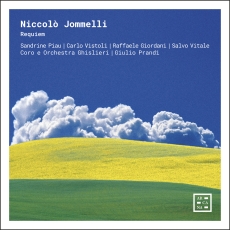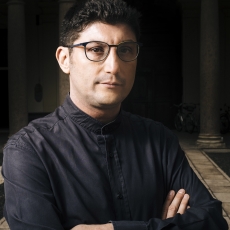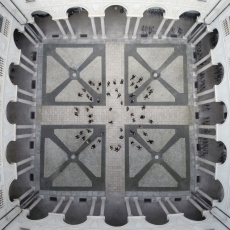Giulio Prandi & Sandrine Piau - Jommelli: Requiem - Planet Hugill
An eighteenth century pre-cursor to Mozart's Requiem proves to be an intimate and subtle work
If Niccolò Jommelli is known at all it is mainly for his sequence of operas written for the Duke of Württemberg at his palace of Ludwigsburg near Stuttgart. These operas played an important role in the development of the operatic reform movement whose best known operas are those of Gluck. But though Jommelli is known for his operas, he wrote other works too, particularly in the period of his life before he worked for the Duke of Württemberg. But even for the Duke, Jommelli did write some sacred music and on this new disc from Arcana we hear Niccolò Jommelli's Requiem with Coro e Orchestra Ghislieri, conducted by Giulio Prandi, with soloists Sandrine Piau, Carlo Vistoli, Raffaele Giordani, and Salvo Vitale. The Duke was cultivated and music loving (a pupil of C.P.E. Bach, who dedicated a celebrated collection to him) and he allowed Jommelli considerable lee-way when it came to the sequence of operas written for him. So, when on 1 February 1756, the Duke's mother, Maria Augusta of Turn und Taxis, died it was to Jommelli that the duke turned for a Requiem Mass. Maria Augusta had been Roman Catholic, though the duchy was Protestant, and her funeral was held in the intimate chapel at Ludwigsburg. Evidently the music was composed quickly (the surviving manuscript suggests three days!), but it became very well known and was one of the most popular settings of the Requiem Mass until that of Mozart (written in 1791). Mozart may well have known the setting, as a pupil of his father's transcribed the work in Salzburg in 1775.
It is a relatively small-scale, rather sober work as befitted the quite intimate setting for the funeral. But it is quite a substantial piece, setting the Kyrie, Sequence (Dies Irae), Offertory (Domine, Jesu Christe), Sanctus and Benedictus, Agnus Dei, Communion and Responsory (Libera Me). To this the performers have added four plainchant movements, Antiphon, Introit, Tract and Postcommunion sung by a Schola Gregoriana made up of the men from the choir. The result is to give us a well-made and pleasing whole.
It is a work which seems to look forward rather than back, so there is little hint of old forms and instead we can hear the style of masses written by Michael Haydn (whose Requiem of 1771 was a big influence on Mozart) and Mozart. As with these later masses, the soloists generally form a group which acts almost as a concertino group, with occasional small solos, except for moments like the Benedictus with its soprano solo (a beautifully limpid performance from Sandrine Piau). There are big dramatic moments, but these tend to remain in context and there is little feeling of operatic drama, instead we have sense of narration of the liturgical story. There are some passages of 'learned counterpoint' which seem to hark back to some of Jommelli's early sacred music, but overall what comes over is the economy of means. Just soloists, choir and strings (no wind, in accordance with a recent Papal encyclical), and the writing is not showy.
But there is much to enjoy. The performance is relatively small scale (13 strings plus organ) and very stylish, the performers seem to have got inside Jommelli's style so this does not suffer from a desire to make the piece different, and Prandi gets a very fine performance from all concerned.
The forces used are probably somewhat larger than those at the first performance, and if you are interested in that degree of authenticity then Il Gardellino and Peter van Heygen have a recording released this year on the Passacaille label which uses far just four singers and no star soloists.
The performers, the Coro e Orchestra Ghislieri, are based at the Centro di Musica Antica at Ghisleri College, the second oldest college in Pavia, Italy and founded in 1567 by Pope Pius V (Antonio Ghisleri). Directed by Giulio Prandi, the Coro e Orchestra Ghislieri was founded in 2003 and explores forgotten works of 18th century repertoire, link to new scholarship.
This performance benefits from a new edition, based on the surviving manuscript in Naples (where Jommelli retired to after leaving the duke's service) written by a friend of the composer. The CD booklet has a photograph of the elaborate chapel at Ludwigsburg along with images of the composer, as well as two articles giving background to the work.
This is one of those recordings which fills in a gap, but which also provides a satisfying musical performance.



